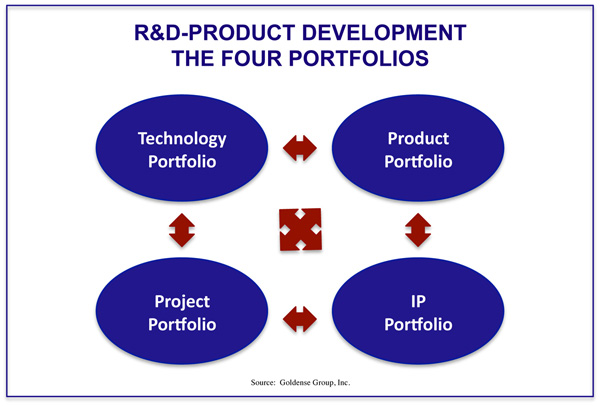Product, Project, Technology, and IP Portfolios
In the 1990s, life was simple. Marketing, or Product Management, maintained the “product portfolio.” In the largest companies, there was perhaps also a technology portfolio. The “R” part of the R&D organization would work with marketing to plan future products based on the projected availability of technologies still in development. Today, having both a technology and a product portfolio is considered the rock-bottom minimum regardless of company size. Just about all companies actively maintain these soft assets—only the degree of formality differs.
Over the past decade, these portfolios became more closely tied together with the advent and acceptance of roadmapping (which charts the path new technologies and products take as they evolve into commercial readiness). In between each and every portfolio snapshot in time, the roadmap provides guidance on the activities needed to reach the portfolio’s next incarnation.
It would be great if we could just call it a day with two portfolios and the roadmaps that tie them together. But that is no longer best practice. We now also need a project portfolio and an intellectual property (IP) portfolio to be a best-practices company.

Project Portfolio: The need for project portfolios has been partially driven by the tremendous growth in project managers and project management organizations. These now-large organizations need to prioritize and sequence their inventories. There are other equally important reasons.
IP Portfolio: The need for IP portfolios has been partially driven by the increasing ease of monetizing intellectual property as a commodity , in replacement of or in addition to including the IP in products for commercial sale. There are other equally important reasons.
Product, Project, Technology, and IP Portfolios [Machine Design – August 2015] discusses the two newest portfolios, and some of their key attributes, that are necessary these days to be a best-practices company.
Product, Project, Technology, and IP Portfolios Read More »
![Goldense Group, Inc. [GGI] Logo](https://goldensegroupinc.com/blog/driving-product-development/wp-content/uploads/2022/03/logo-corp-darkBlue-65x65.png)
